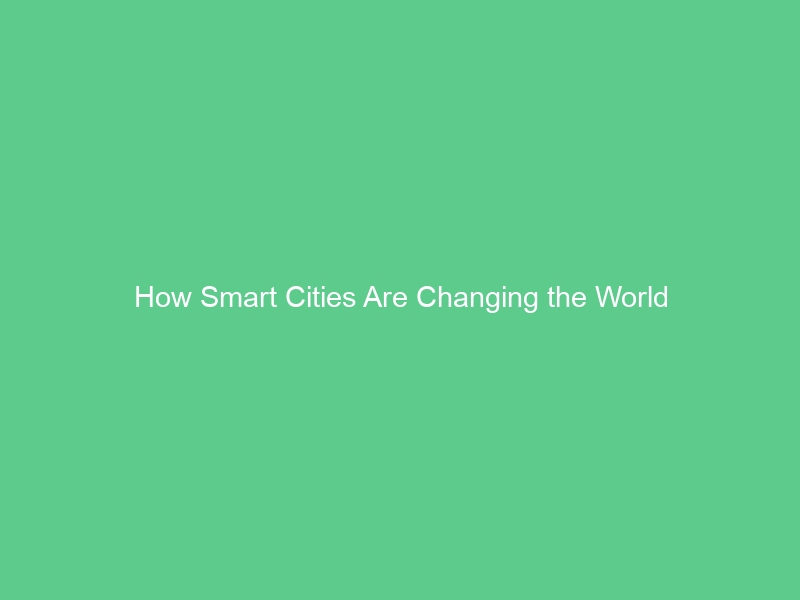Smart cities employ a network of sensors and software to collect electronic data on people, infrastructure and the environment for use in improving efficiency and service delivery.
Planning is key to successful Smart City implementation. This requires understanding residents’ needs and prioritizing high-demand initiatives.
EcoVille
EcoVille is an innovative smart city initiative that utilizes technology for greater efficiency and sustainability in urban planning, using AI to optimize energy consumption and public safety as well as developing innovative transportation systems.
EcoVille faced one of its primary challenges in optimizing energy production while remaining sustainable and secure energy supply – something which proved especially challenging during periods of peak usage or adverse weather that threatened production.
The city was able to overcome this challenge by installing an intelligent energy grid, which allowed it to manage energy distribution based on real-time demand and weather forecasts, leading to significant savings on electricity costs while simultaneously decreasing reliance on non-renewable resources. Their success has inspired other communities around the country to adopt similar technologies.
Amsterdam
Smart cities use cutting-edge technologies to enhance city services and quality of life for residents, lowering operational costs while simultaneously building trust with residents. Relying on strong communication networks for sharing data among citizens and developing solutions that enable informed decision-making, these cities use smart technologies to increase efficiency while simultaneously decreasing operating expenses and costs.
Smart city technology can also bring efficiencies to urban manufacturing and farming operations, leading to job creation while decreasing food waste and greenhouse gas emissions, thus improving air quality and improving air quality.
Smart cities must take great care to ensure their devices are secure and that privacy is preserved. Many worry that smart city devices could be used for surveillance while others fear data collected could be misused if not encrypted anonymously and securely. A great way to address these concerns would be ensuring data remains anonymous and encrypted.
Dubai
Dubai has established itself as one of the world’s top smart cities through cutting-edge technologies and strategies, which include streamlining social, cultural, and work experiences to make life simpler and more pleasurable for its inhabitants.
The city invests in sustainable infrastructure and renewable energy, as well as moving toward a circular economy which promotes reuse and sharing of economic resources.
Dubai is also improving the way it processes data and information. For instance, they use blockchain technology to speed up customs clearance procedures, saving 5.5 billion dirham per year on document processing alone. Other initiatives include paperless government and AI strategies which make interacting with city services and getting assistance easier for its residents.
Helsinki
Helsinki is an exquisite Scandinavian city offering an abundance of cultural and natural activities. Its parks and green spaces create an idyllic environment for walking, bicycling and enjoying nature; additionally it boasts an efficient public transportation network of buses, trams, water ferries and the northernmost metro in the world – indulging those seeking culture without giving up any natural amenities!
The city government is taking proactive steps to enhance infrastructure and services by investing in technologies that will make the city more energy-efficient and eco-friendly, such as “Mobility as a Service,” which encourages commuters to opt for public transit instead of driving privately owned vehicles.
Helsinki boasts an active culture scene, including an international dance house and new contemporary arts museum. Furthermore, Helsinki hosts the biennale for visual art exhibitions every two years.
New York City
New York City is one of the world’s most populous cities and uses smart city solutions to address issues like congestion, water conservation, energy efficiency and trash collection – providing residents with more sustainable lifestyles while driving economic development.
Smart sensors across a city gather real-time data which is then analyzed to uncover valuable insights that enhance operations and service delivery, then conveyed to municipal officials via strong communication channels for them to develop innovative solutions.
New York’s streetlights, for instance, are programmed to dim when they’re not needed and sensors monitor waste bin levels and air quality – saving electricity and water consumption costs, decreasing traffic gridlock and providing greater security. These smart devices help save both electricity and water consumption costs and consumption rates as well as increase security levels.

